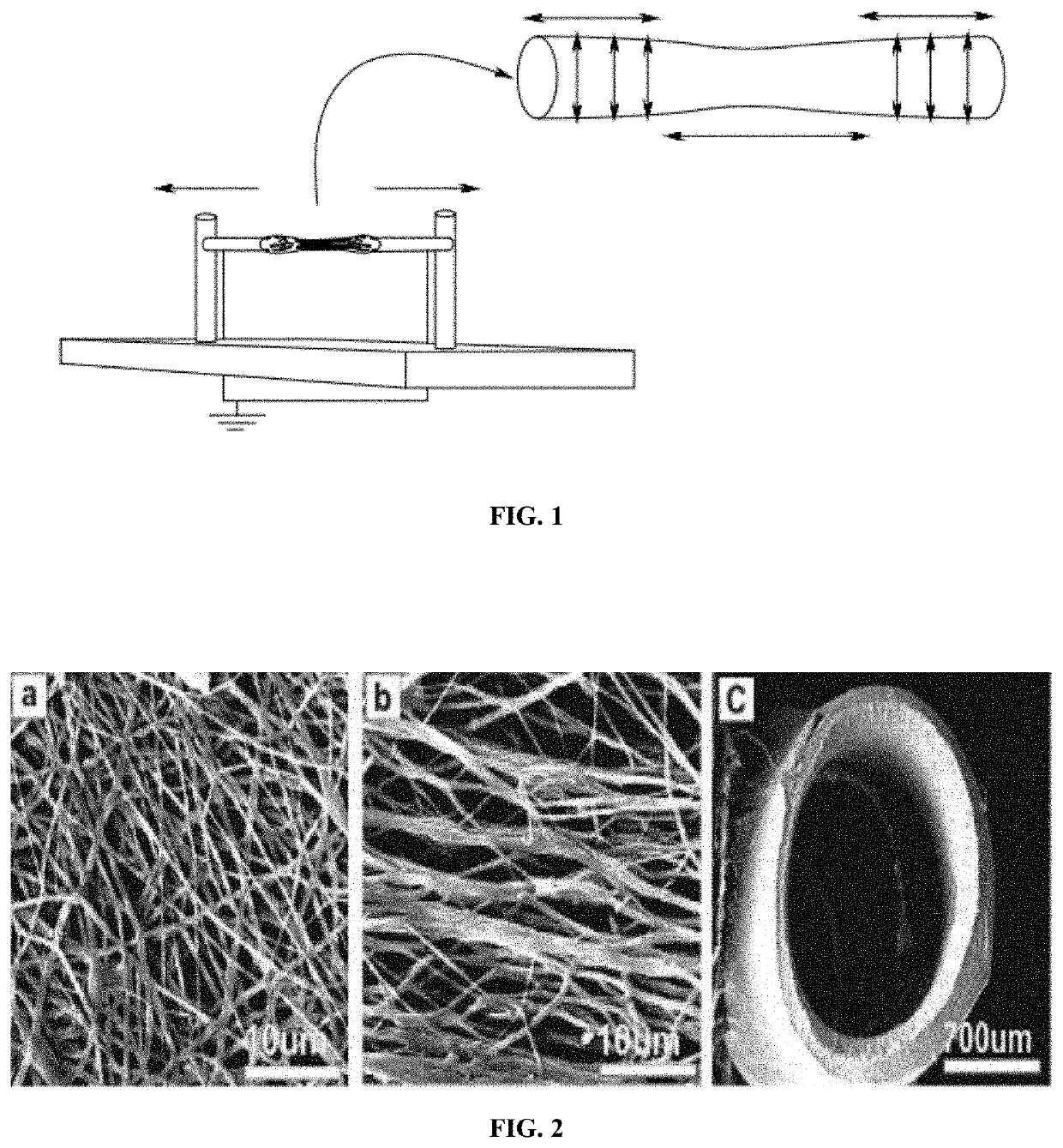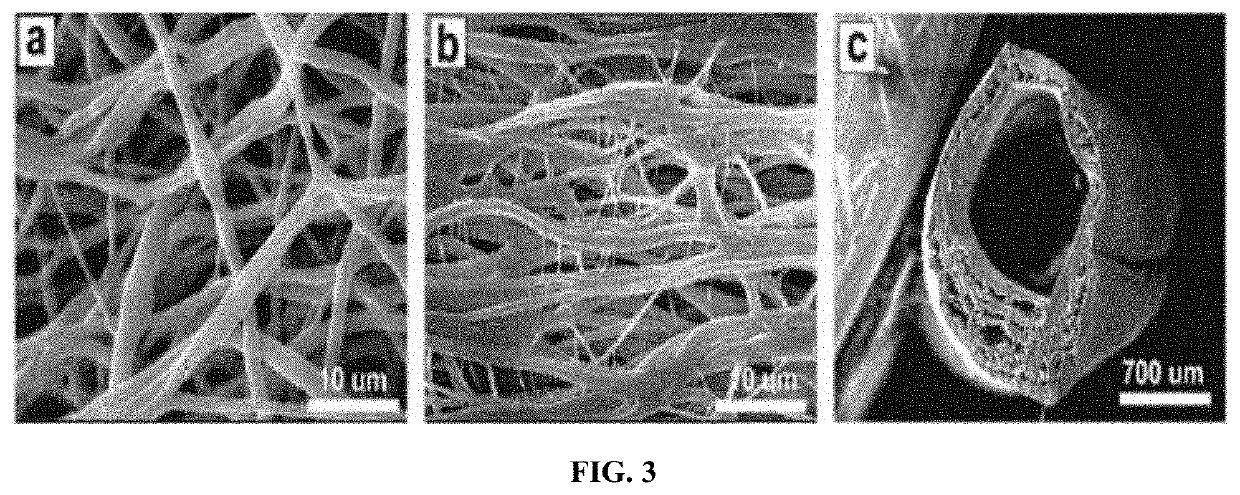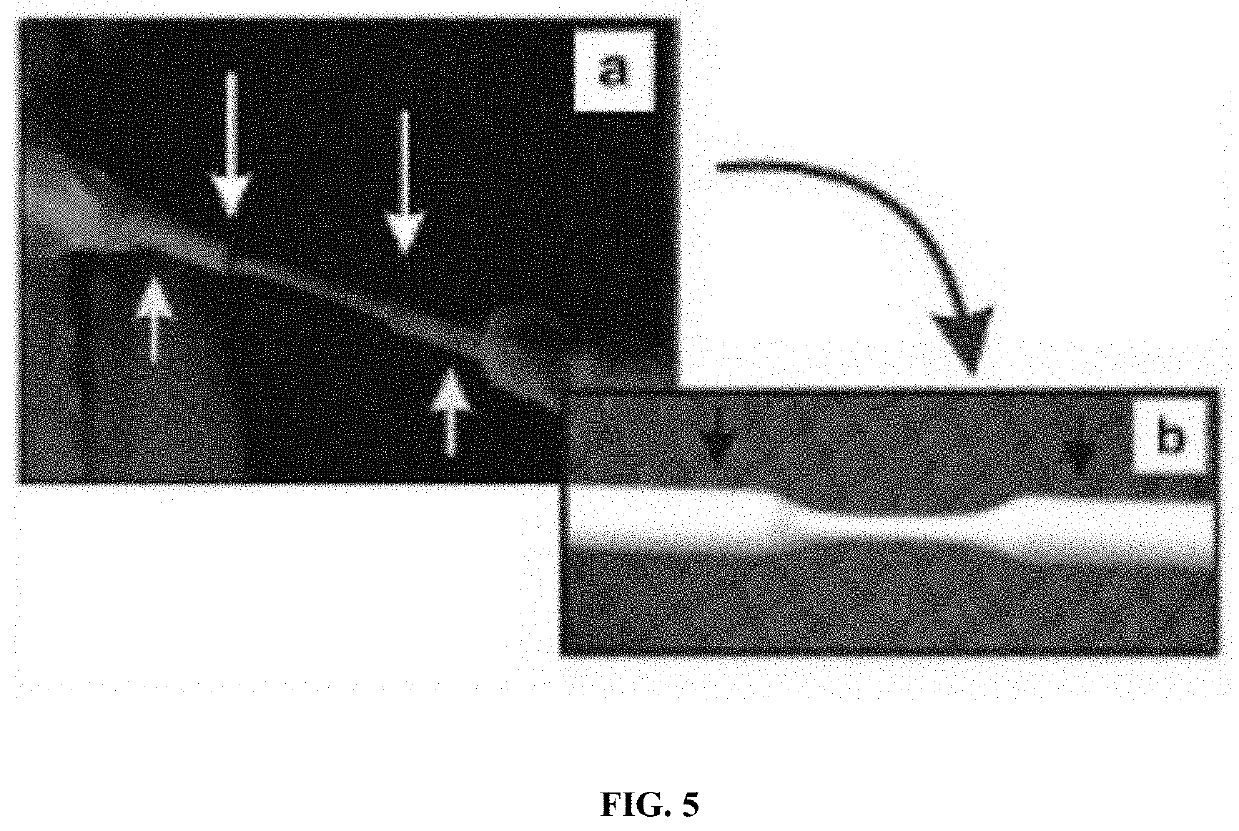Fibrous nerve conduit for promoting nerve regeneration
a nerve conduit and fibrous nerve technology, applied in the field of neurology, can solve the problems of less predictable clinical outcomes, affecting fibrin stability, and imposing burden on health-care systems, and achieve the effects of promoting nerve regeneration, improving mechanical properties, and improving attachmen
- Summary
- Abstract
- Description
- Claims
- Application Information
AI Technical Summary
Benefits of technology
Problems solved by technology
Method used
Image
Examples
example 1
[0041] The Preparation of PCL / Collagen nerve conduits. To prepare the electro-spinning solution, a homogeneous solution of PCL (12% w / v) (70 kDa: molecular weight, Sigma Chemical Co.) and collagen (10% w / v) (type I, Vista exir Co.) is obtained by dissolving PCL and collagen in HFIP. The solutions is mixed (50:50) and stirred for 1 h before electro-spinning. The clear solution is achieved and electro-spun from a 5 ml syringe with a needle gauge of 21 and flow rate of 1 ml / h. A high voltage (17 kV) is applied to the tip of the needle of the syringe. The distance between needle and collector is 15 cm and the size of gap is 2 cm. The conduit is fabricated by simultaneous deposition of the fibers both on channels and between them. The tubular constructs is removed by pulling the channel to the outside and let it to become dried for 24 hours prior for testing.
example 2
[0042] The Preparation of PLGA / PCL-CNT nerve conduits. MWCNT (—COOH functionalized, diameter of 20-30 nm with a length of 10-30 μm) is purchased from US Research Nano material's, USA. A solution of PLGA (50 kDa, Esun Industrial Co.) (15%, w / v), PCL (10% w / v) and MWCNT (1 wt. % relative to PLGA / PCL) is prepared. In this regard, MWCNT is sonicated in HFIP for 4 h. Thereafter, PLGA and PCL polymers are dissolved and added to the dispersion solution of MWCNTs. The achieved solution is stirred for 4 hours and then, sonicated for 2 h before electro-spinning. The black viscose solution is achieved and electro-spun from a 5 ml syringe with a needle gauge of 21 and flow rate of 1 ml / h. A high voltage (15 kV) is applied to the tip of the needle of the syringe. The distance between needle and collector is 14 cm and the size of gap is 2 cm. The conduit is fabricated by simultaneous deposition of the fibers both on rods and between them. The tubular constructs are removed by pulling the rods to ...
example 3
[0043] Microscopic Imaging of nerve conduits. In this example, the microscopic imaging of conduits is performed in order to find out their structural characteristics. SEM images of PCL / Collagen nerve conduit of example 1. FIG. 3 demonstrates microscopic images of PLGA / PCL-CNT nerve conduit of example 2. The present invention has circle-shaped cross section and the inside of the conduit is hollow and the thickness of the nerve conduit is approximately 0.4-0.7 mm.
PUM
| Property | Measurement | Unit |
|---|---|---|
| diameters | aaaaa | aaaaa |
| inner diameter | aaaaa | aaaaa |
| diameter | aaaaa | aaaaa |
Abstract
Description
Claims
Application Information
 Login to View More
Login to View More - R&D
- Intellectual Property
- Life Sciences
- Materials
- Tech Scout
- Unparalleled Data Quality
- Higher Quality Content
- 60% Fewer Hallucinations
Browse by: Latest US Patents, China's latest patents, Technical Efficacy Thesaurus, Application Domain, Technology Topic, Popular Technical Reports.
© 2025 PatSnap. All rights reserved.Legal|Privacy policy|Modern Slavery Act Transparency Statement|Sitemap|About US| Contact US: help@patsnap.com



